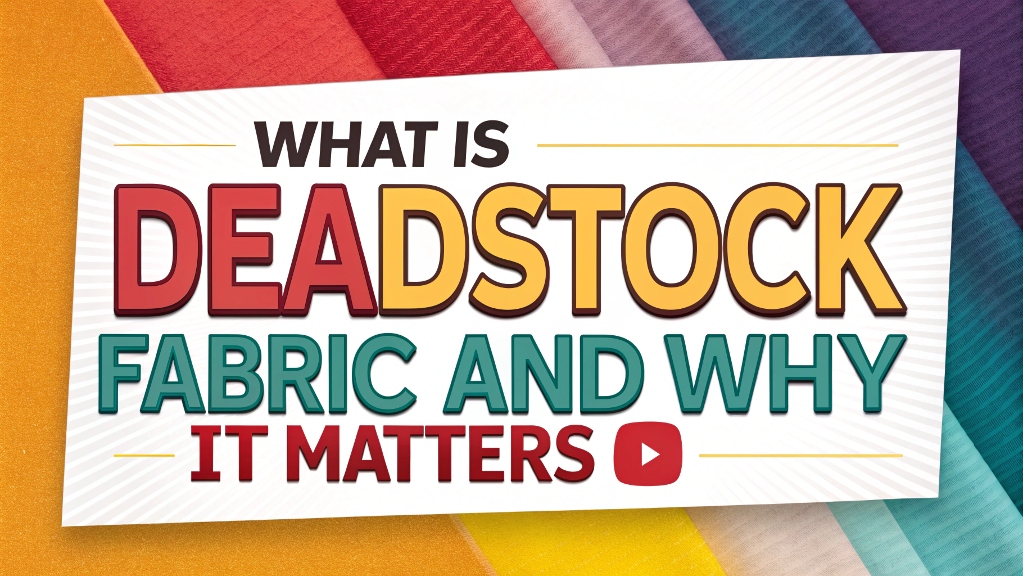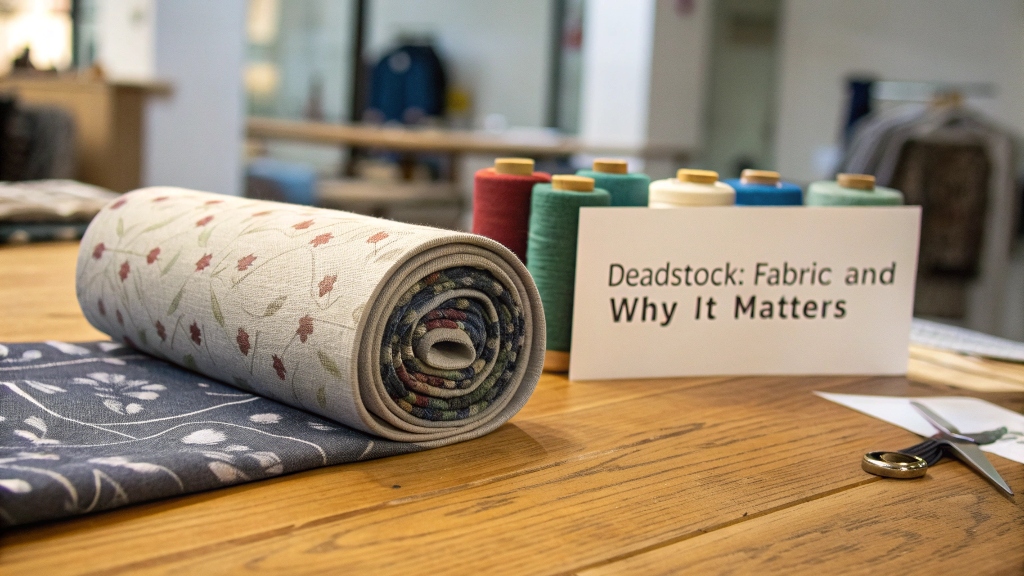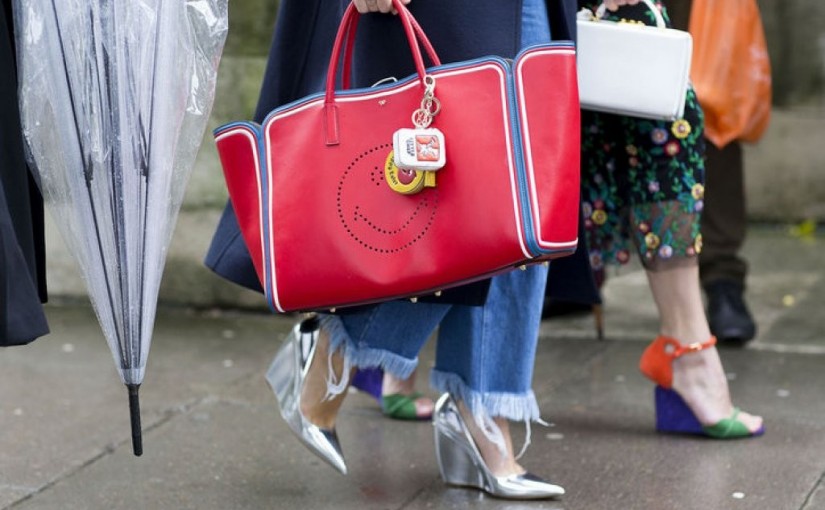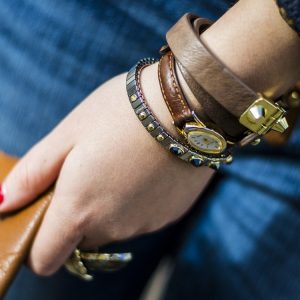Deadstock fabric, often referred to as surplus or remnant fabric, is a term that has gained significant traction in the fashion and textile industries as sustainability becomes a central focus. These are unused, leftover materials from textile production or garment manufacturing that would otherwise be discarded. As the world grapples with the environmental impact of fast fashion and overproduction, deadstock fabric offers a compelling solution to reduce waste, conserve resources, and foster ethical practices. This 2500-word article delves into the history, current state, key concepts, benefits, challenges, and future trends of deadstock fabric, exploring why it matters to designers, consumers, and the planet.
Understanding Deadstock Fabric
Definition and Key Characteristics
Deadstock fabric refers to textiles that remain unused after their intended production cycle, typically sitting in warehouses or storage facilities. These materials are often high-quality, as they were originally produced for specific collections or manufacturing runs.
-
Types of Deadstock Fabric:
-
Production Leftovers: Excess fabric ordered by brands to account for potential defects or overestimations.
-
End-of-Roll Fabrics: Short lengths of fabric left at the end of a production roll, too small for large-scale manufacturing.
-
Canceled Orders: Fabrics produced for collections that were never completed or sold.
-
Sample Yardage: Fabrics used for prototyping or sampling that are no longer needed.
-
-
Material Composition: Deadstock can include natural fibers (cotton, silk, wool), synthetic fibers (polyester, nylon), or blends, spanning a range of weaves, knits, and finishes.
-
Condition: Typically brand-new, though some may have minor imperfections or slight aging from storage.
Historical Context
The concept of deadstock fabric is not new but has evolved with the industrialization of textile production.
-
Pre-Industrial Era: Before mass production, fabric was handwoven and highly valued, with scraps meticulously reused for quilts, patches, or smaller garments.
-
Industrial Revolution (18th-19th Century): The rise of mechanized textile production led to surplus fabrics, but waste was minimal as materials were costly.
-
Post-WWII Boom: The mid-20th century saw a surge in textile production, with overstock becoming more common as brands prioritized variety and speed.
-
Fast Fashion Era (Late 20th Century): The explosion of fast fashion exacerbated fabric waste, with brands overproducing to meet fleeting trends, leaving vast quantities of unused textiles.
The term “deadstock” gained prominence in the early 2000s as sustainability advocates highlighted the environmental cost of textile waste, prompting designers to repurpose these materials.
Why Deadstock Fabric Matters
Environmental Impact
The textile industry is one of the most resource-intensive and polluting sectors globally. Deadstock fabric offers a way to mitigate its environmental footprint.
-
Reducing Landfill Waste:
-
Globally, over 92 million tons of textile waste are generated annually, much of it ending up in landfills.
-
Deadstock fabrics, if not repurposed, contribute to this waste, releasing methane as they decompose or, in the case of synthetics, persisting for centuries.
-
-
Conserving Resources:
-
Producing new fabric requires significant water, energy, and raw materials. For example, one kilogram of cotton fabric requires approximately 10,000 liters of water.
-
Using deadstock eliminates the need for new production, conserving these resources.
-
-
Lowering Carbon Emissions:
-
Textile manufacturing accounts for roughly 10% of global carbon emissions.
-
Repurposing deadstock reduces the carbon footprint associated with spinning, dyeing, and finishing new fabrics.
-
Economic and Creative Benefits
Deadstock fabric is not only an environmental win but also a boon for designers and businesses.
-
Cost-Effectiveness:
-
Deadstock is often sold at a fraction of the original cost, enabling small brands and independent designers to access high-quality materials affordably.
-
For example, luxury deadstock silk might cost $5-$10 per yard compared to $20-$50 for newly produced silk.
-
-
Unique Designs:
-
Limited quantities of deadstock encourage one-of-a-kind or small-batch collections, appealing to consumers seeking exclusivity.
-
Designers like Reformation and Zero Waste Daniel have built brands around deadstock, leveraging its scarcity for marketing.
-
-
Supporting Circular Economy:
-
By integrating deadstock into production, brands contribute to a circular economy, where resources are reused rather than discarded.
-
Social and Ethical Implications
Using deadstock aligns with growing consumer demand for transparency and ethical practices.
-
Combating Overproduction:
-
Fast fashion’s overproduction model often exploits workers in low-wage countries. Deadstock reduces the need for new production, indirectly alleviating pressure on labor systems.
-
-
Empowering Conscious Consumerism:
-
Consumers increasingly prefer brands that prioritize sustainability. Deadstock-based products resonate with eco-conscious shoppers, fostering brand loyalty.
-
-
Preserving Craftsmanship:
-
Deadstock often includes high-quality or artisanal fabrics that might otherwise be lost, preserving traditional techniques and heritage materials.
-
Challenges of Using Deadstock Fabric
Sourcing and Accessibility
While deadstock offers numerous benefits, sourcing it can be complex.
-
Inconsistent Supply:
-
Deadstock is inherently limited, with no guarantee of consistent colors, textures, or quantities, making it challenging for brands requiring uniformity.
-
Small designers may struggle to access large warehouses, which often prioritize bulk buyers.
-
-
Quality Variability:
-
Some deadstock may have defects, fading, or storage-related damage, requiring careful inspection.
-
Blends or synthetics may not align with a brand’s sustainability ethos if they’re non-biodegradable.
-
-
Logistical Barriers:
-
Deadstock is often stored in disparate locations, increasing transportation costs and carbon emissions.
-
Lack of centralized marketplaces complicates sourcing for smaller businesses.
-
Design and Production Limitations
Working with deadstock requires adaptability in design and manufacturing.
-
Limited Quantities:
-
Designers must create collections based on available yardage, which may restrict scalability or lead to mismatched pieces.
-
For example, a designer with 10 yards of deadstock denim can only produce a handful of garments.
-
-
Creative Constraints:
-
Deadstock’s unpredictability demands flexibility, as designers cannot always choose specific colors or patterns.
-
Matching trims, threads, or linings can be difficult, increasing production complexity.
-
-
Technical Expertise:
-
Working with varied fabrics requires skilled patternmakers and seamstresses, as each material behaves differently during cutting and sewing.
-
Market Perception and Scalability
Despite its appeal, deadstock faces market and operational hurdles.
-
Consumer Misconceptions:
-
Some consumers view deadstock as “second-hand” or inferior, requiring brands to educate them on its quality and value.
-
Marketing must emphasize the eco-friendly and exclusive nature of deadstock products.
-
-
Scaling Challenges:
-
Large brands struggle to integrate deadstock into mass production due to its limited availability and variability.
-
Smaller brands may face profitability issues if sourcing and production costs outweigh savings.
-
Current State of Deadstock Fabric
Industry Adoption
The use of deadstock fabric has surged in recent years, driven by sustainability trends and consumer demand.
-
Fashion Brands:
-
High-profile brands like Patagonia, Stella McCartney, and Eileen Fisher incorporate deadstock into their lines, often highlighting it in marketing campaigns.
-
Fast-fashion retailers like H&M have experimented with deadstock in “conscious” collections, though their scale limits impact.
-
-
Independent Designers:
-
Small labels, such as Collina Strada and Christy Dawn, rely heavily on deadstock, creating limited-edition pieces that resonate with niche audiences.
-
-
Textile Marketplaces:
-
Platforms like Queen of Raw, Fabscrap, and Offset Warehouse have emerged to connect designers with deadstock suppliers, streamlining sourcing.
-
These marketplaces often provide detailed information on fabric composition, origin, and sustainability metrics.
-
Technological Advancements
Technology is enhancing the viability of deadstock fabric.
-
Inventory Management:
-
Digital tools help warehouses catalog and sell deadstock, reducing the risk of fabrics being forgotten or discarded.
-
Blockchain technology is being explored to trace deadstock origins, ensuring transparency.
-
-
Fabric Sorting and Testing:
-
Automated systems can analyze fabric composition, identifying blends or defects to ensure quality.
-
Innovations in dyeing and finishing allow designers to refresh or standardize deadstock for cohesive collections.
-
-
3D Design Software:
-
Tools like Clo3D enable designers to virtually test deadstock fabrics, minimizing waste during prototyping.
-
Consumer Trends
Consumers are driving demand for deadstock-based products.
-
Sustainability Awareness:
-
A 2023 Nielsen study found that 73% of global consumers are willing to pay more for sustainable products, including those made from deadstock.
-
-
Demand for Uniqueness:
-
Gen Z and Millennials prioritize individuality, favoring small-batch or custom deadstock garments over mass-produced items.
-
-
Social Media Influence:
-
Platforms like Instagram and TikTok amplify deadstock brands, with hashtags like #DeadstockFashion gaining millions of views.
-
Future Trends in Deadstock Fabric
Scaling Sustainable Practices
The future of deadstock lies in making it accessible and scalable without compromising its eco-friendly ethos.
-
Centralized Deadstock Hubs:
-
Regional warehouses or co-ops could aggregate deadstock, reducing transportation emissions and improving access for small brands.
-
Governments or NGOs might subsidize such hubs to promote circular fashion.
-
-
Corporate Accountability:
-
Legislation, like the EU’s 2024 textile waste reduction mandates, may require brands to report and repurpose deadstock, driving industry-wide adoption.
-
-
Collaborative Models:
-
Partnerships between fast-fashion giants and sustainable brands could redirect deadstock to smaller designers, balancing scale with ethics.
-
Innovation in Design and Production
Emerging technologies and design philosophies will shape deadstock’s future.
-
Zero-Waste Design:
-
Techniques like pattern cutting and modular design maximize deadstock usage, ensuring no scraps are wasted.
-
Brands like Tonlé use every inch of deadstock, creating patchwork or layered garments.
-
-
Upcycling and Customization:
-
Advances in laser cutting and digital printing allow designers to transform deadstock into high-value, customized pieces.
-
AI-driven design tools could suggest optimal uses for limited-yardage fabrics.
-
-
Biofabrication Synergies:
-
Deadstock could be combined with bio-based materials (e.g., mushroom leather) to create hybrid textiles with enhanced sustainability.
-
Consumer and Cultural Shifts
Cultural attitudes will continue to evolve, cementing deadstock’s relevance.
-
Mainstream Acceptance:
-
As education improves, deadstock will shed any “second-hand” stigma, becoming a hallmark of luxury and innovation.
-
High-end designers may collaborate with deadstock platforms to create exclusive capsules.
-
-
Rental and Resale Integration:
-
Deadstock garments could dominate rental platforms like Rent the Runway, extending their lifecycle.
-
Resale markets may prioritize deadstock pieces for their rarity and eco-credentials.
-
-
Global Reach:
-
Developing countries, where textile waste is a growing issue, could adopt deadstock practices, supported by international aid or training programs.
-
Comparative Analysis: Deadstock vs. Newly Produced Fabric
|
Aspect |
Deadstock Fabric |
Newly Produced Fabric |
|---|---|---|
|
Environmental Impact |
Reduces waste, conserves resources, lowers emissions |
High water, energy, and carbon footprint |
|
Cost |
Often 50-80% cheaper than new fabric |
Full production cost, including raw materials |
|
Availability |
Limited, inconsistent quantities and types |
Readily available, customizable to order |
|
Quality |
High but may have minor imperfections |
Consistent, tailored to specifications |
|
Creative Potential |
Encourages unique, small-batch designs |
Supports uniform, large-scale production |
|
Scalability |
Challenging for mass production |
Ideal for large runs and fast fashion |
This table underscores deadstock’s environmental and economic advantages, balanced against its logistical challenges.
Review
Deadstock fabric is a powerful tool in the fight against textile waste, offering environmental, economic, and creative benefits. Its ability to reduce landfill waste, conserve resources, and foster unique designs makes it a cornerstone of sustainable fashion. However, challenges like inconsistent supply, design constraints, and consumer misconceptions require innovative solutions, from centralized marketplaces to advanced design technologies. As brands, designers, and consumers increasingly prioritize sustainability, deadstock’s role will only grow, reshaping the textile industry for the better. The article effectively highlights its historical roots, current applications, and future potential, providing actionable insights for industry professionals and conscious consumers alike.
Read More Also: Signet Rings: A Signet of Style in Modern Fashion
FAQs
What is deadstock fabric?
Deadstock fabric is unused, leftover textile from production or manufacturing, often repurposed to reduce waste.
Why is deadstock fabric sustainable?
It minimizes landfill waste, conserves resources like water and energy, and reduces the carbon footprint of new fabric production.
Where can designers source deadstock fabric?
Platforms like Queen of Raw, Fabscrap, and Offset Warehouse, as well as textile warehouses, offer deadstock fabrics.
What are the challenges of using deadstock?
Limited quantities, inconsistent supply, and potential quality issues can complicate sourcing and production.
How can consumers support deadstock fashion?
By purchasing from brands that use deadstock, supporting small designers, and advocating for sustainable practices.
Conclusion
Deadstock fabric represents a pivotal shift toward sustainability in the textile industry, addressing the environmental and ethical challenges of overproduction. Its historical roots trace back to resource-scarce eras, but its modern relevance stems from the urgent need to combat textile waste. By offering cost-effective, unique, and eco-friendly alternatives to new fabrics, deadstock empowers designers and resonates with conscious consumers. Despite challenges like sourcing difficulties and scalability, innovations in technology, design, and policy are paving the way for a future where deadstock is a mainstream solution. As the industry evolves, embracing deadstock fabric will be crucial to building a circular, responsible, and creative fashion ecosystem.





